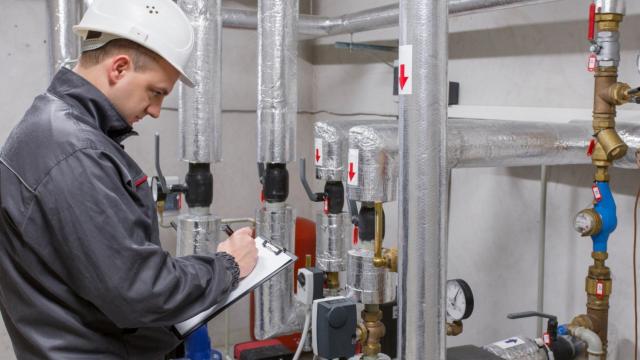In the U.S., commercial facilities spend more than $190 billion a year on utilities, making energy a cost worth managing. Whether you're looking for simple efficiency upgrades or developing a long-term improvement strategy, an energy audit is the first step in reducing energy use and saving money. It can help you identify efficiency measures, analyze their cost and savings potential, and lay the groundwork for an energy management plan.
Types of Energy Audits
An audit can range from a simple assessment to a detailed evaluation including diagnostic testing and data tracking. The American Society of Heating, Refrigerating and Air-Conditioning Engineers (ASHRAE) defines three levels of energy audits:
Level 1 - Walkthrough. The basic starting point for optimizing building energy performance. It consists of an analysis of energy bills and a brief onsite inspection of the facility and its systems. The main objective of a Level 1 assessment is to identify low-cost, energy-saving measures and develop an initial list of more capital-intensive improvements.
Level 2 - Energy survey and analysis. An in-depth assessment of building energy use and more detailed cost and savings analyses of recommended energy efficiency measures. Energy performance is benchmarked against similar facilities and consumption is broken down by end use, such as lighting and air conditioning. Key staff members are interviewed for their insights into building characteristics and operations.
A detailed site assessment may include a variety of diagnostic tests, such as:
•Combustion analysis
•Light level assessment
•Air and water flow measurement
•Leakage and insulation assessment using infrared thermography
Level 3 - Detailed survey and analysis. This assessment combines Level 1 and 2 procedures with detailed recommendations and financial analysis for major capital-intensive efficiency upgrades. A Level 3 audit may also capture long-term energy use data through data-logging devices or through the building's energy management system.
Which Type is Right for Your Facility?
For smaller facilities with no plans or budget for major energy efficiency investments, a Level 1 audit will identify the best low-cost, energy-saving opportunities that can yield immediate results. Level 2 and Level 3 assessments are appropriate for larger, more complex facilities with defined energy efficiency goals.
Although they're more time-consuming and expensive, these audits provide the in-depth evaluation and financial analysis needed for major equipment upgrades and long-term investments. Work with your service provider to select the right type of audit for your needs.
Finding an Energy Auditor
Energy auditing services are offered by energy consultants and engineering firms, as well as energy services companies (ESCOs). ESCOs not only identify efficiency improvements, they also provide financing and installation services. Depending on the size of your facility and the scope of the audit, the process may involve a single individual or a team of specialists.
Professional certification makes sure your service provider is trained in the auditing process. Certifying organizations include ASHRAE and the Association of Energy Engineers (AEE).
•Find an ASHRAE Certified Building Energy Assessment Professional
•Search for an AEE Certified Energy Auditor
To locate an ESCO in your area, go to the National Association of Energy Service Companies' provider search. The U.S. Department of Energy's Industrial Assessment Center provides no-cost energy audits for qualifying manufacturing facilities.
October 2022 Connections Newsletter
From industry trends and best practices to sustainability initiatives, our monthly Connections Newsletter provides valuable insights, updates, and resources to support our large business customers.
Full Newsletter